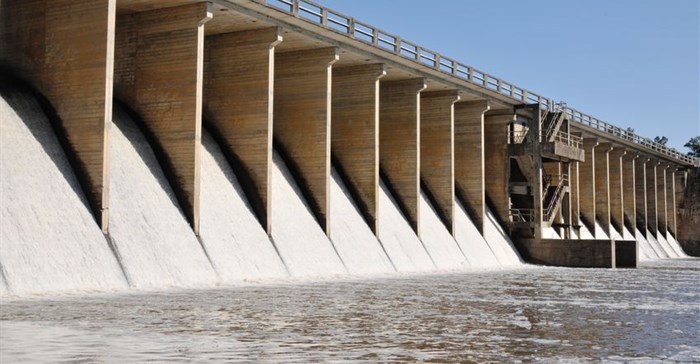
Subscribe & Follow
Too early to consider lifting water restrictions, says DWS

“Recent rains in parts of the country have given hope that perhaps the days of the water crisis may be over, even though it is too early to consider lifting water restrictions in affected provinces,” the department said.
A weekly report released by the department on Wednesday, 25 July, shows that South Africa's dam levels are showing signs of stability at 78.7%, compared to last year when they were at 69.7% during the drought that had ravaged the country.
Gauteng dams almost at capacity
Gauteng tops the charts, with dam levels almost reaching their capacity at 99.7%. The figures indicate a great improvement in the province compared to 2017 when the levels were recorded at 90.2%. The Vaal Dam is among the water resources that have recorded the highest levels in the country at 97.6%. The dam has improved by 3% compared to 2017 when it was 94.0%.
The heavy downfalls in the Western Cape have increased dam levels to a whopping 50.1% this week, compared to 25.7% in the same period last year. Levels at Theewaterskloof Dam, which feeds Cape Town, have almost doubled to 41.3%, compared to 20.5% a year ago.
However, despite the good rains, the department said it will only review the current water restrictions when the dam levels have reached 85% capacity. The Cape Town Dams System, with six dams serving the Cape Town Metro, has also increased from 54.8% to 56.1%. More rains are predicted for the region.
Eastern Cape worst affected
The Eastern Cape came out the worst province with the lowest dam levels in the country at 62.9%. The Algoa System, with five dams serving Nelson Mandela Bay, decreased from 19.7% to a perilous 18.9%. Last year, the system stood at 32.9%. Kouga Dam has decreased from 7.4% to 7.2% this week; Groendal decreased from 40.1% to 39.7%; Katrivier improved by 1% this week and Macubeni is at 97.2%. The Amathole System, which has six dams that serve East London, decreased from 90.1% last week to 89.9%.
In the North West, Haartebeespoort Dam improved from 66.9% to 97.3% this week, while Sehujwane is at 85.1%. In KwaZulu-Natal, dam levels decreased from 64.2% to 63.8% compared to last week. Umgeni Dam System, which boasts five dams that serve eThekwini and uMsunduzi in Pietermaritzburg, decreased from 75.4% to 74.8%. The system was at 60.3% in the same period last year.
Northern Cape improved from 87.2% to 93.1% this week. Boegoeberg Dam increased from 91.3% to 99.6%. In Limpopo, the average dam levels decreased from 72.6% to 72.1%. Polokwane Water Systems decreased almost by 3% in the past week to 91.5%. In Mpumalanga, the average dam levels decreased from 79.9% to 79.5%, representing a 3% increase compared to the same period last year.
The department reminds water users to continue adhering to water restrictions imposed by their respective municipalities.
Source: SAnews.gov.za
SAnews.gov.za is a South African government news service, published by the Government Communication and Information System (GCIS). SAnews.gov.za (formerly BuaNews) was established to provide quick and easy access to articles and feature stories aimed at keeping the public informed about the implementation of government mandates.
Go to: http://www.sanews.gov.za



















































































